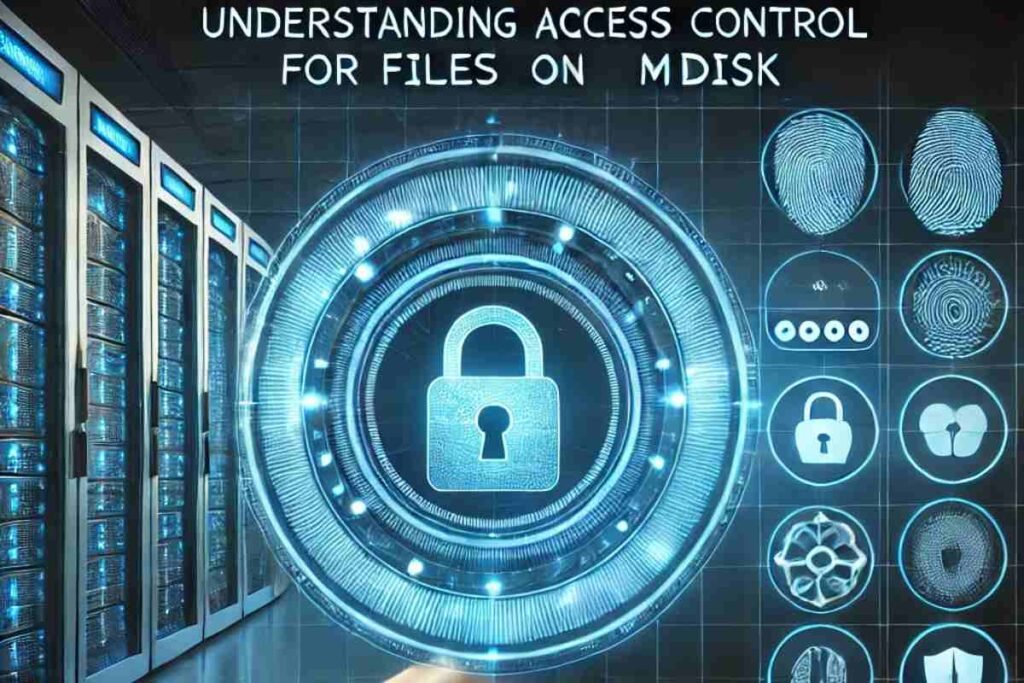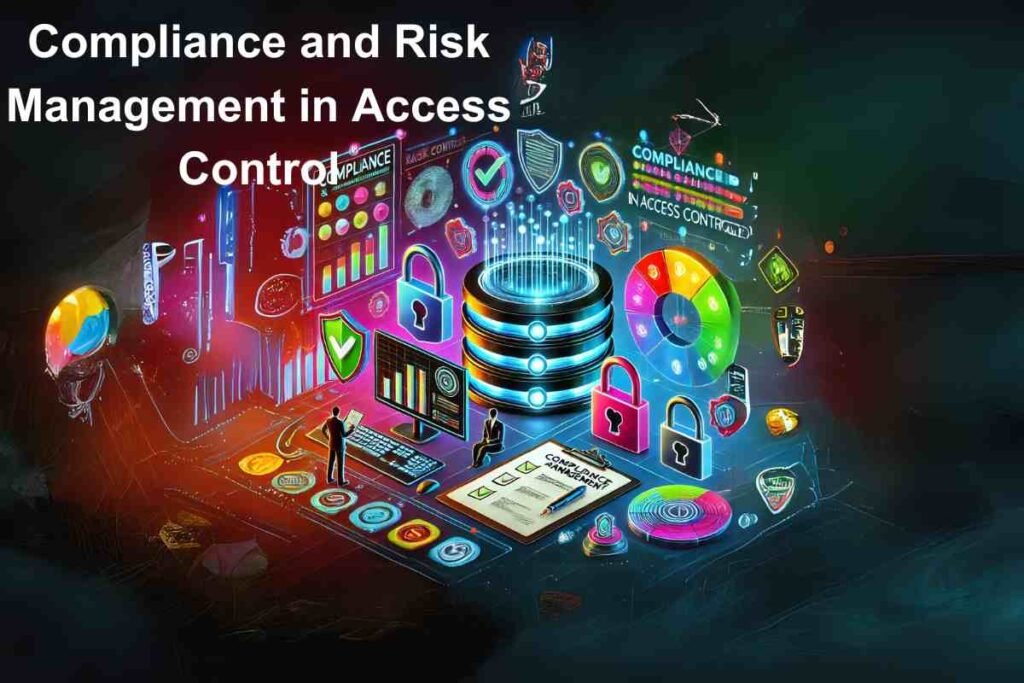Properly configuring Access Control for Files on mDisk is essential for protecting sensitive data and ensuring secure collaboration.
By implementing role-based permissions, encryption, and audit trails, users can prevent unauthorized access and maintain compliance.
Understanding Access Control for Files on mDisk

Access Control for Files on mDisk is the foundation of data protection and information security. It involves policies and technologies that regulate user access and maintain data integrity.
Without effective Access Control for Files on mDisk, organizations risk unauthorized access, data breaches, and compliance violations.
Key Components of Access Control:
- Authentication: Verifying user identity before granting access. This can include passwords, biometric verification, multi-factor authentication (MFA), and security tokens.
- Authorization: Assigning permissions based on user roles. This ensures users only access data necessary for their responsibilities, preventing unauthorized modifications or deletions.
- Audit Trails: Tracking and monitoring file access. Detailed logs help administrators detect suspicious activities, investigate incidents, and ensure compliance with security regulations.
- Principle of Least Privilege: Granting minimal necessary permissions. This reduces the risk of accidental or intentional misuse of sensitive data by limiting user privileges to only what is essential.
Additional Aspects of Access Control for Files on mDisk:
- Session Management: Controlling the duration and conditions under which a user session remains active to prevent unauthorized use.
- Access Control Models: Various models, such as Discretionary Access Control (DAC), Mandatory Access Control (MAC), and Attribute-Based Access Control (ABAC), provide different levels of control based on organizational needs.
- Data Classification: Categorizing data based on sensitivity and applying security measures accordingly.
Implementing Role-Based Access Control (RBAC) on mDisk
Role-Based Access Control (RBAC) simplifies permission management by assigning access rights based on job functions.
Steps to Implement RBAC:
- Define Roles: Identify user roles (Admin, Editor, Viewer).
- Assign Permissions: Restrict access based on responsibilities.
- Monitor Access Logs: Track changes and unauthorized activities.
- Enforce Data Compliance: Ensure policies align with regulatory standards.
RBAC enhances user management and minimizes unauthorized access risks.
Enhancing Security with Access Control Lists (ACLs)
Access Control for Files on mDisk can be strengthened with Access Control Lists (ACLs), which provide granular control over file permissions.
Benefits of ACLs:
- Customizable Permissions: Define specific access rights for users.
- Improved Confidentiality: Restrict sensitive data access.
- Better Data Governance: Strengthen organizational security policies.
Configuring ACLs ensures a robust security configuration and helps maintain compliance.
Advanced Security Measures for mDisk

Beyond basic permission settings, advanced security measures reinforce data protection.
Key Techniques:
- Data Encryption: Secure sensitive files using encryption standards.
- Data Loss Prevention (DLP): Prevent accidental data breaches.
- Cloud Identity Management: Strengthen cloud file security.
- Regular Security Audits: Review and update access permissions.
By integrating these security protocols, organizations enhance network access control and cybersecurity resilience.
Managing Shared Folder Security on mDisk
Shared folders pose security risks if not properly managed. Implementing strong security measures ensures safe collaboration.
Best Practices:
- Use Strong Passwords: Enforce complex authentication credentials.
- Restrict Public Access: Limit external file sharing.
- Regularly Review Permissions: Adjust access rights based on user roles.
- Enable Multi-Factor Authentication (MFA): Add extra security layers.
These practices maintain cloud data security and prevent unauthorized access.
Monitoring Access Logs and Audit Trails
Tracking file access is crucial for risk management and security auditing.
Importance of Monitoring:
- Detect Unauthorized Access: Identify security breaches early.
- Ensure Compliance: Maintain audit trails for regulatory adherence.
- Optimize Security Policies: Adjust governance policies based on access patterns.
Regular audits strengthen information security and prevent data breaches.
Integrating Access Control with User Education
Educating users ensures the effectiveness of Access Control for Files on mDisk.
Importance of Security Training
- Informs users about risks of data leaks and poor sharing practices
- Reduces chances of accidental access misuse
- Enhances overall awareness of secure file handling
Promoting Strong Access Practices
- Encourage use of unique passwords and MFA
- Share guidelines for file sharing and access requests
- Teach role-based permission logic to end users
Continuous Awareness Programs
- Conduct monthly security refreshers
- Share real-case data breach examples
- Use quizzes and checklists to reinforce learning
Integrating Access Control with Mobile Device Security
Mobile file access is convenient but risky—control is key.
Device-Level Access Restrictions
- Implement remote wipe and lock features
- Use secure, encrypted device storage
- Restrict access from unverified devices
Managing access from mobile endpoints ensures data remains protected even outside office networks.
Mobile App Security Features
- Enable biometric authentication
- Use app-specific passcodes
- Ensure apps are up to date with security patches
Keeping mobile apps secure helps enforce Access Control for Files on mDisk on the go.
Best Practices for BYOD Policies
- Enforce secure onboarding procedures
- Require antivirus and VPN usage
- Monitor mobile access patterns
Well-structured BYOD practices strengthen endpoint security for files accessed on mDisk.
Compliance and Risk Management in Access Control

Ensuring data compliance protects organizations from legal and financial consequences.
Key Compliance Measures:
- Adopt Information Security Policies: Define clear access rules.
- Implement Data Governance Frameworks: Structure data management policies.
- Conduct Risk Assessments: Identify vulnerabilities and mitigate threats.
- Maintain Secure File Encryption: Enhance file confidentiality.
Aligning access control strategies with compliance requirements secures sensitive information.
Conclusion
Optimizing Access Control for Files on mDisk is key to securing sensitive data and maintaining compliance. By leveraging encryption, role-based access, and audit logs, users can ensure only authorized personnel can view or modify files.
Regularly updating access policies further strengthens data integrity and minimizes risks. Implementing best practices like multi-factor authentication (MFA) and restricted sharing enhances security.
Proper Access Control for Files on mDisk ensures safe collaboration, prevents unauthorized access, and aligns with industry security standards. Strengthen your file security today for better protection and efficiency.
FAQs
How do I enable Access Control for Files on mDisk?
Go to file settings, select Access Control, and configure user permissions.
What are the key security features of Access Control for Files on mDisk?
It includes role-based access, encryption, MFA, and audit logs for secure data management.
Can I restrict access to specific files on mDisk?
Yes, assign file-level permissions to limit access to specific users or groups.
What is Role-Based Access Control (RBAC) in mDisk?
RBAC assigns permissions based on user roles, ensuring efficient and secure access management.
How can I monitor unauthorized access to my files?
Use audit trails and access logs to track file activities and detect security breaches.
How often should I review Access Control settings on mDisk?
Review settings every 3-6 months to maintain security and compliance.
Does mDisk support Multi-Factor Authentication (MFA)?
Yes, enabling MFA adds an extra layer of security for file access.
What is the Principle of Least Privilege in Access Control?
It ensures users only access necessary files, reducing security risks and data breaches.


